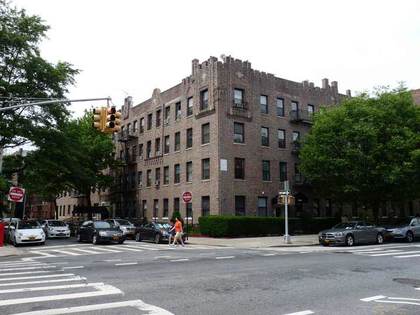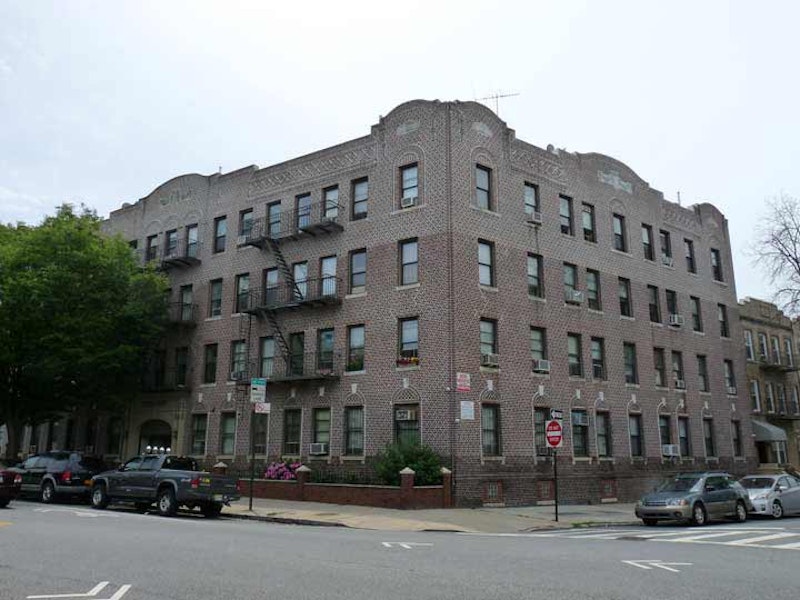I was walking from 77th St. to Gravesend and traced the path that I often walked in the years 1963 to 1971 when I attended St. Anselm church and school. In the years 1963-71 virtually my entire world, much of the time, was contained between 83rd and 86th Sts. and between 3rd and 6th Aves. in Bay Ridge and I walked up and down 83rd St. for what seemed like thousands of times. Here’s what’s on that path today and show much of what remains the same since I left.
I did stray outside the boundary. There were occasional walks with my grandmother, who looked after me much of the time since both parents worked, to Shore Rd., and bus rides with one parent or the other on the B16 (Fort Hamilton Parkway), B63 (5th Ave.), B37 (3rd Ave.), B64 (86th St. to Coney Island) and more rarely on other lines. When the Bridge opened there were rides on the R7 (now S53) to Clove Lakes Park. And that’s where my website and book, Forgotten New York, began.
In 1965 on one of our Clove Lakes trips, I must’ve gotten bored and wandered off on my own. I was eight. I remember meandering around the north end of the park where the bridle paths are, or were. An hour or two passed. Finally I was intercepted by the park patrol on a go-cart, and one of the guys in the cart was the old man, who gave me a reaming and, he said later, that was one of the few times he ever gave me a whack. I’d lost a shoe. I remember the ride home, dreading what my mother would do (she was formidable when she got her Irish up—both my parents were yellers, which is why I’m not). When we got home, all she said was that I’d been punished enough.
But that foray set the template. Within three years I was bicycling to Coney Island and then all over Brooklyn and into Nassau and Queens by the time I was a teenager. The pattern of exploration had begun.
For much of my first quarter century, the building you see above, 8302 6th Ave., Tilden Court, was my home, in apartment B4, a two-bedroom. My parents moved in in 1957, the year of my birth, and my father lived here until his death in 2003, surviving my mother, who died in 1974. The building itself was constructed around 1925 and is built like square around a central courtyard. I moved out in the early-1980s but then briefly back in, in a one-room apartment, from 1991-1993, and I’ve been in Queens since then.

For five years I was an altar boy at St. Anselm Church at 4th Ave. between 82nd and 83rd. Most of the time, though, I didn’t enter through the front door. I went in through the back, where there was a room behind the altar that was connected to the rectory. Each weekend, a list was posted as to which mass each altar boy was assigned to. If you were lucky, you didn’t have to serve the six or seven a.m. mass—if you did, that meant you got up at five, in whatever weather—and trudged down to the church. Altar boys are assigned a number of tasks to be performed during mass—my favorite was ringing the bells, although the altar at St. Anselm had push button bells! Altar boys wore a uniform of a black robe with a white overshirt, called a cassock and surplice. These were carried in plastic zip-up bags to and from church.
This is the relatively “new” church building, dedicated in 1953. The building was 10 years old when I began attending mass regularly with my parents and grandmother.

As a parish, St. Anselm was founded in 1922 and this combination church and school building went up in 1926 at 4th Ave. and 83rd St. Besides the altar boys, I was involved in Scouting; I was never athletic, so never got on any of the sports teams. My grades were good at first, but flattened out as I reached my level of expertise, or incompetence, around the seventh or eighth grade. As I became more self-aware, I recognized that I wasn’t treated with the respect I thought I deserved by some of the nuns, though I’m sure they’d disagree with that assessment were they still alive.

I spent a lot of time in this building as a kid. The ground floor was where my dentist, Dr. Tempkin, had his office. I still go to the same office because I continued with Dr. Tempkin’s successor, Dr. Mark De Bock, whose office is now at 4th Ave. and Bay Ridge Parkway or, as all Bay Ridgers call it, 75th St. My dentist is my only continued connection with Bay Ridge. Dr. De Bock retired last year, so I’ve now outlasted two dentists in the same office, though not all my teeth have.

83rd St. between 4th and 5th Aves. This stretch is mostly made up of attached houses with enclosed front porches. I also noticed that 83rd and a couple of parallel streets featured double-masted street lights that were usually used on wider boulevards. The Department of Traffic must’ve had a surplus.

Southeast corner of 5th Ave. and 83rd. The combo residences and storefronts, in place since the 1920s at least, are on both sides of 5th Ave.—only the businesses change. Waldinger’s Pharmacy occupied the corner when I was a kid. It moved to the other side of 5th Ave. in the 1970s and hung in there until just a few years ago. A couple of doors down was a Scandinavian deli that made a terrific piece of fried, breaded fish on Fridays.

For me the southwest corner of 5th and 83rd was dominated by Triangle Sporting Goods, where my parents and I bought my Scouting stuff, where the radiology office is now. It was two floors of clothing, tennis rackets, baseball bats, basketballs, etc. This was also one of two places in the Bay Ridge of the 1960s where I regularly dealt with an African-American man: one of the friendly salesmen. The other was our building super for a few years, who was from the Caribbean.

During my days at 8302 I spent a lot of time in Tom McDonald Triangle, which looked nothing like this; it was a black-topped triangle with exterior sidewalks and square patches of dirt where the trees were. I spent hours digging in that dirt. Across the street, hundreds of buildings were razed for the approach roads for the Verrazano-Narrows Bridge, and using toy trucks and other implements of my own making, I was imitating the work going on across the street. The women of the immediate area would gather on the benches and chit-chat, including my mother and grandmother. But they’d go in, however, at 8:30. That was the time Merv Griffin went on TV.

Evelyn Hall, Fort Hamilton Parkway and 85th St. This was an important building since my grandmother resided here, and I’d be shuffled off within when my parents had guests. After my mother passed away, I was a nearly daily guest as my grandmother was alone. My mother’s sister Mary’s family lived in Van Nuys, CA, and thus my grandmother was nearly abandoned except for me; she and my father didn’t get along.
For some extra money, my father kept up a building on 85th St. at the other end near 5th Ave. Since a Mrs. Reilly lived in the building, it was always known to us as Reilly’s. As a teenager and into my 20s I helped out by hauling garbage and emptying dumbwaiters most nights of the week before or after spending time with my grandmother. This instilled humility.
—Kevin Walsh is the webmaster of the award-winning website Forgotten NY, and the author of the books Forgotten New York (HarperCollins, 2006) and also, with the Greater Astoria Historical Society, Forgotten Queens (Arcadia, 2013)

